Imagine walking into your home, greeted by an array of vibrant plants thriving without a speck of soil. The art of growing plants in water—known as hydroponics—has captivated both novice and seasoned gardeners, offering a clean, efficient way to nurture greenery indoors. This method not only saves space but also eliminates the mess and hassle of traditional soil gardening, making it an appealing choice for urban dwellers and plant enthusiasts alike.
For those just starting their gardening journey, hydroponics can be a gateway to understanding plant care, offering an uncomplicated introduction to nurturing life. Experienced gardeners, on the other hand, will find it a refreshing challenge that expands their horticultural repertoire. In this article, you’ll discover the essentials of setting up your own water-based garden, from selecting the right plants to understanding their unique nutrient needs.
As we dive into this transformative practice, you’ll learn how to create an environment where plants can flourish, harnessing the simplicity and elegance of water. We’ll explore the benefits of this method, including faster growth and fewer pests, and guide you through the step-by-step process of starting your own water garden. Whether you’re looking to add a touch of nature to your home or expand your gardening skills, growing plants in water offers a rewarding and accessible path to cultivating your green thumb.
Select Suitable Water-Friendly Plants
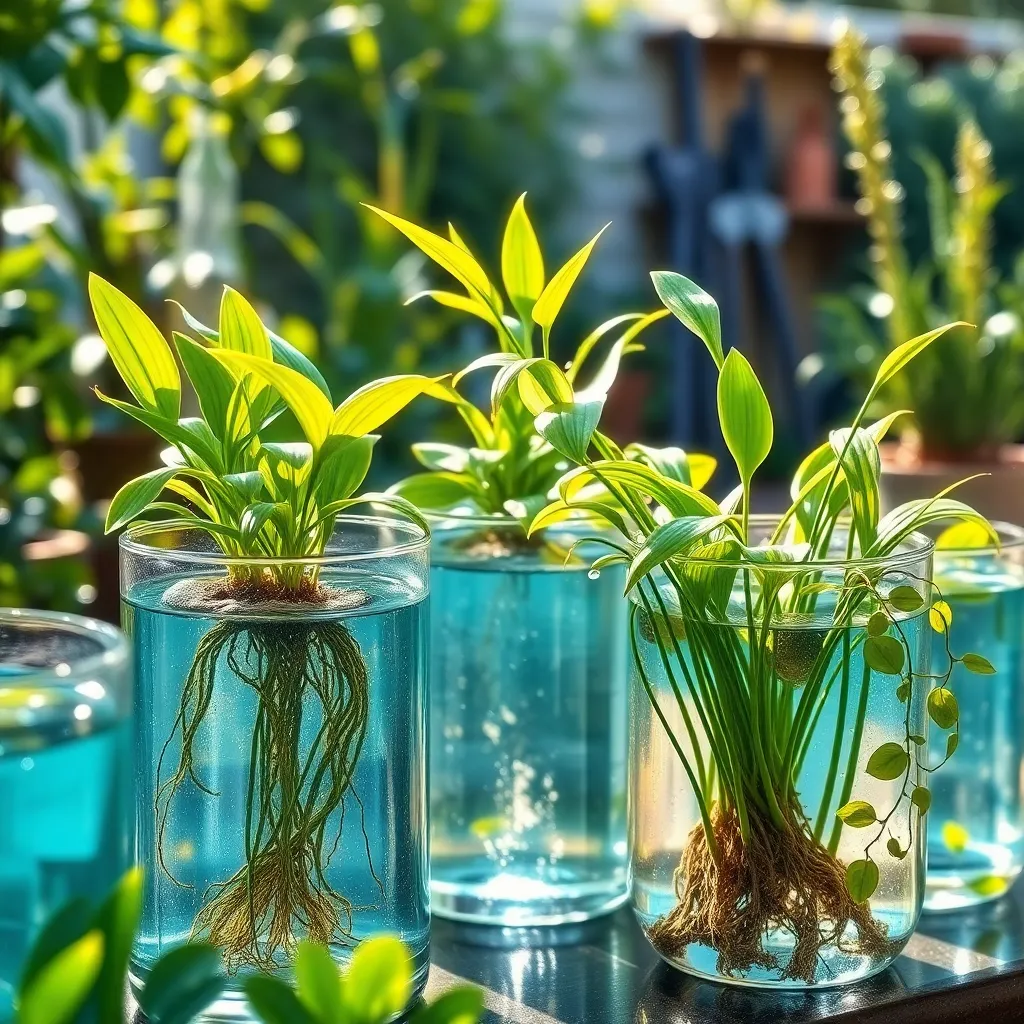
When selecting plants for water-only gardening, it’s essential to choose species that thrive in aquatic environments. Plants like pothos, lucky bamboo, and philodendrons are excellent choices because they adapt well to growing in water.
Begin with cuttings from a healthy parent plant, which should be placed in a glass container with clean, non-chlorinated water. Change the water every two weeks to prevent stagnation and ensure the cuttings receive adequate nutrients and oxygen.
For beginners, pothos are particularly forgiving and can thrive in a variety of light conditions, making them ideal starter plants. Advanced gardeners might explore growing herbs like mint and basil in water, which can add an edible element to your indoor garden.
Ensure that your water-only plants receive indirect sunlight, as direct exposure can heat the water and harm the roots. Adding a few drops of liquid fertilizer monthly can provide the necessary nutrients to encourage healthy growth.
Prepare Clean Water Containers
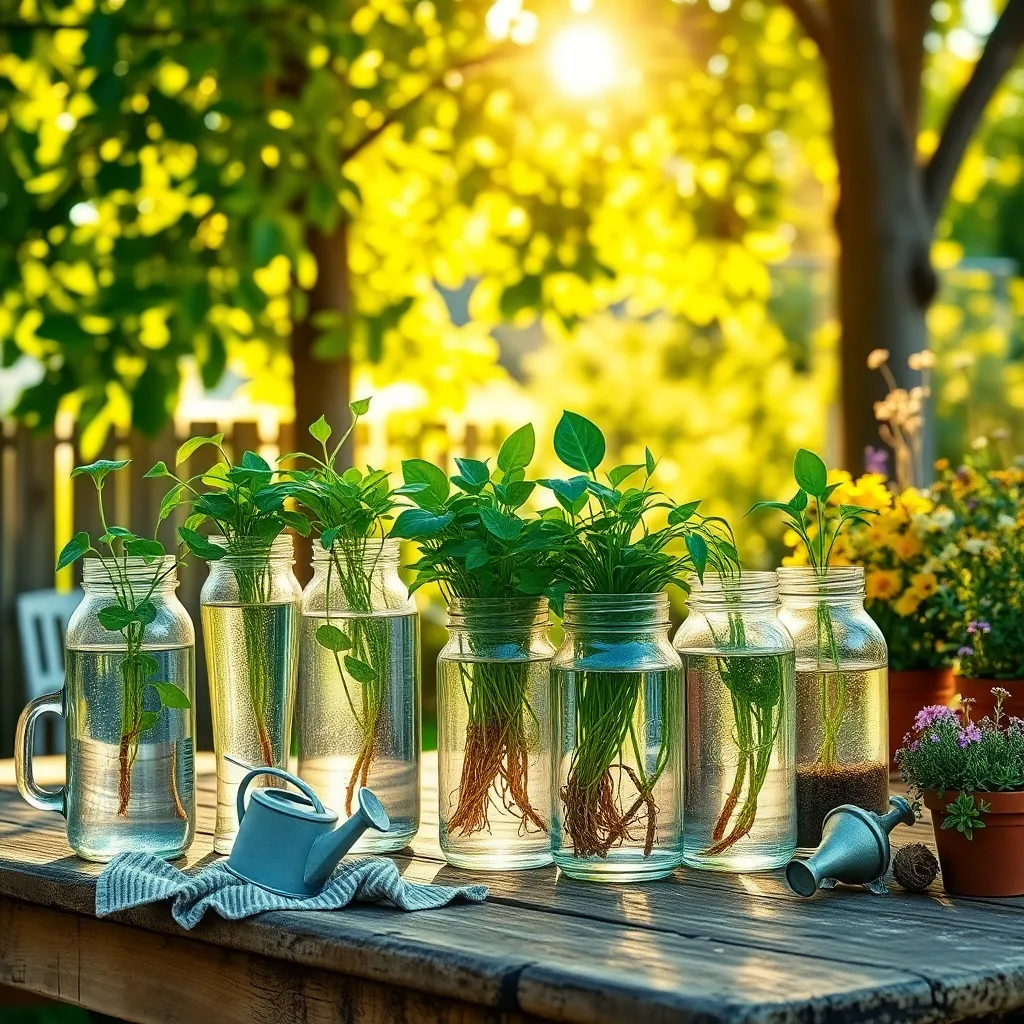
Before starting your water-only plant journey, it’s crucial to have clean water containers ready. Clean containers prevent bacterial buildup and ensure a healthy environment for your plants.
Choose containers made of glass or clear plastic, as they allow you to monitor root growth and water clarity. Varied sizes are beneficial since different plants have different space requirements for their roots.
Begin by washing containers thoroughly with mild soap and warm water, then rinse them well to remove any soapy residue. Sanitizing with a vinegar solution—one part vinegar to three parts water—can help eliminate any lingering bacteria.
Once cleaned, fill the containers with dechlorinated water, which is essential for plant health. Allow tap water to sit for 24 hours to let chlorine dissipate naturally, or use a water conditioner available at garden centers.
Position Plants in Containers
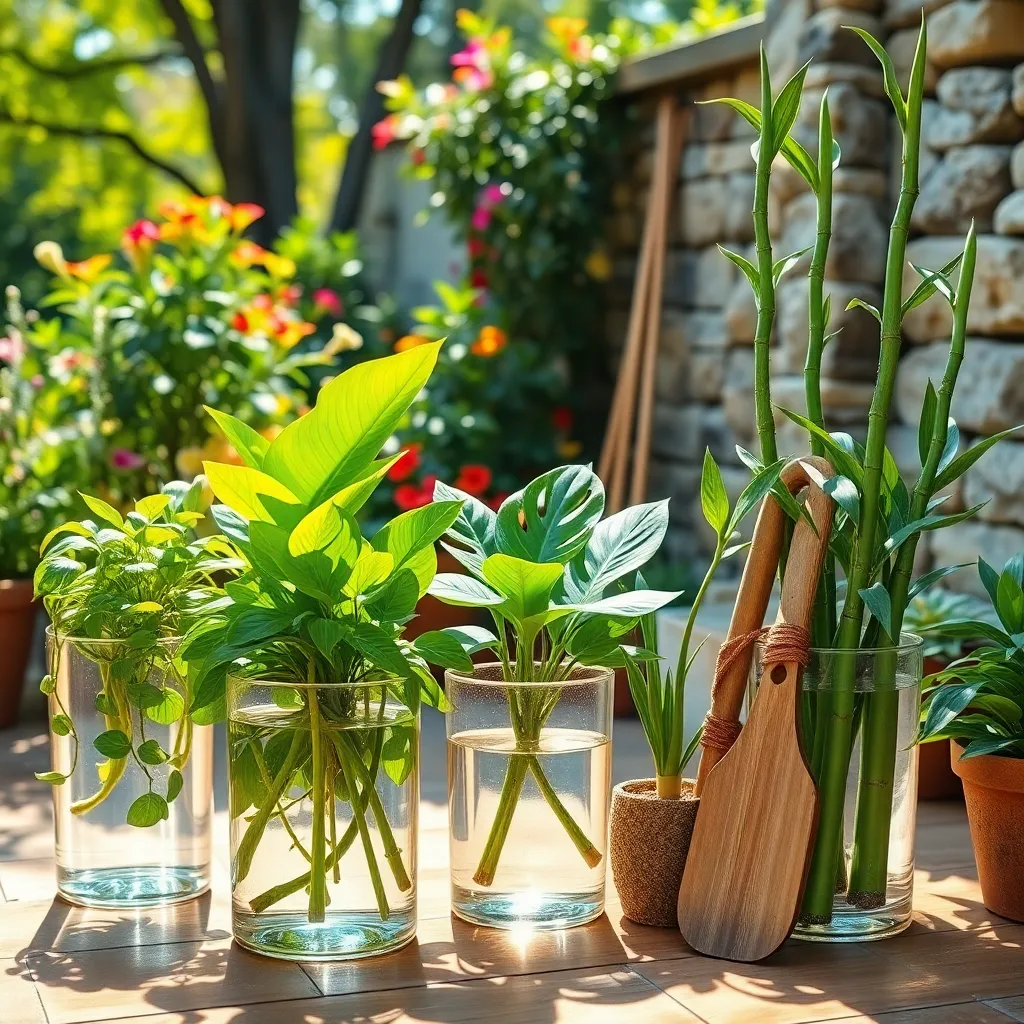
Positioning your plants correctly in containers is crucial for their success in water-based gardening. Begin by selecting a location with adequate light, as most water-grown plants thrive with at least six hours of indirect sunlight daily.
Ensure the container is stable and not prone to tipping over, as this could damage the plants. A wide-mouthed jar or vase often provides better support and allows for easy access to the plant roots.
For optimal growth, place taller plants like pothos or lucky bamboo near the center of the container. This allows them to grow upward without support, while smaller plants can be positioned around the edges for a balanced look.
Rotate the containers every few days to ensure even light distribution, especially if they are placed near a window. This practice prevents plants from leaning towards the light source and encourages uniform growth.
Add Essential Nutrients to Water
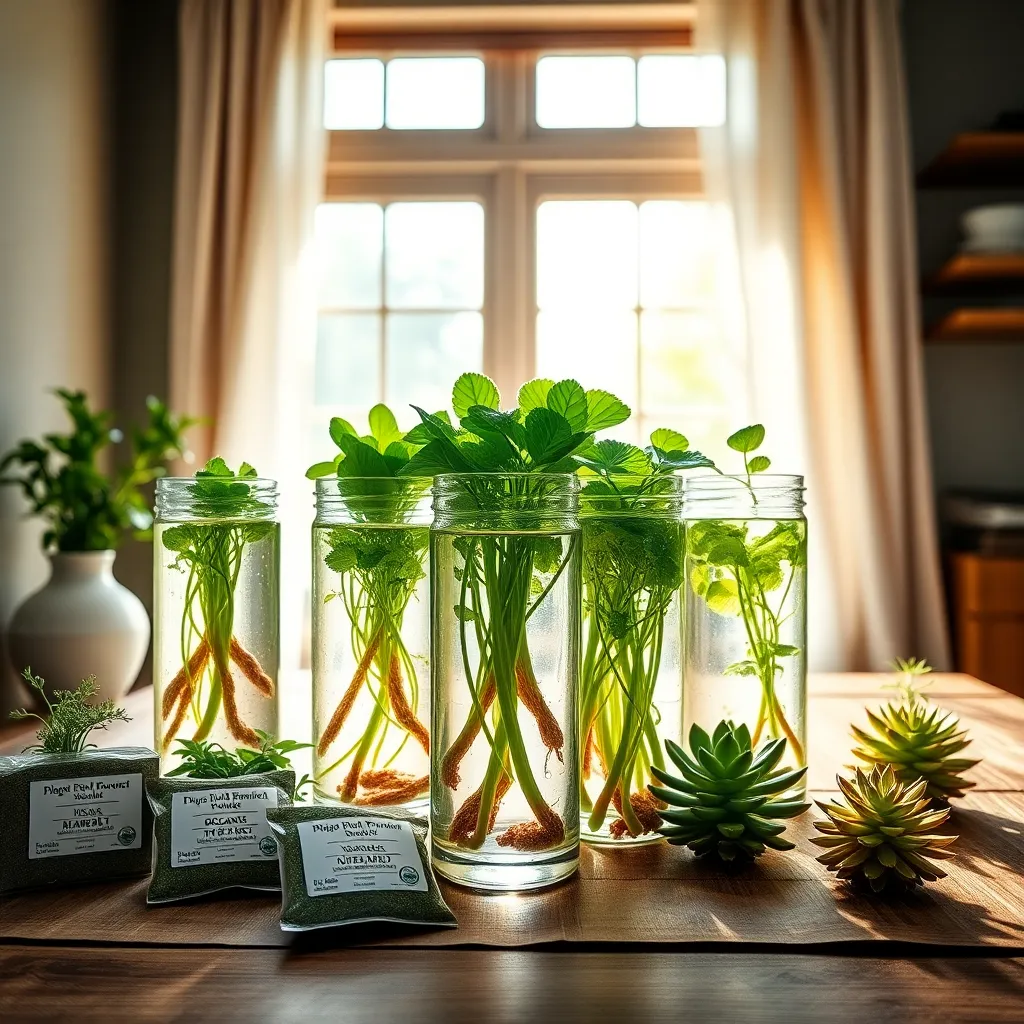
Once your plants are comfortably settled in their containers, it’s crucial to provide them with the necessary nutrients to thrive in a water-only environment. In water-based systems, plants rely heavily on the dissolved nutrients for their growth, since they can’t extract them from soil.
To start with, you’ll need a balanced hydroponic nutrient solution, which is specially formulated for plants growing in water. These solutions typically contain essential macronutrients such as nitrogen, phosphorus, and potassium, as well as micronutrients like iron, magnesium, and calcium.
Begin by diluting the nutrient solution according to the package instructions, as over-concentration can harm your plants. It’s usually recommended to change the water and refresh nutrients every two weeks to prevent the buildup of salts and to ensure the plants are getting fresh nutrients.
For beginners, using a pre-mixed liquid nutrient solution can simplify the process and ensure a balanced diet for your plants. More experienced gardeners might choose to experiment with mixing their own solutions, allowing for customization based on specific plant needs.
Always monitor the pH level of your water, as nutrient uptake is highly dependent on it. Ideal pH levels for most plants range between 5.5 and 6.5; a pH meter can be a valuable tool here to keep your water conditions optimal.
Monitor and Adjust Water Levels
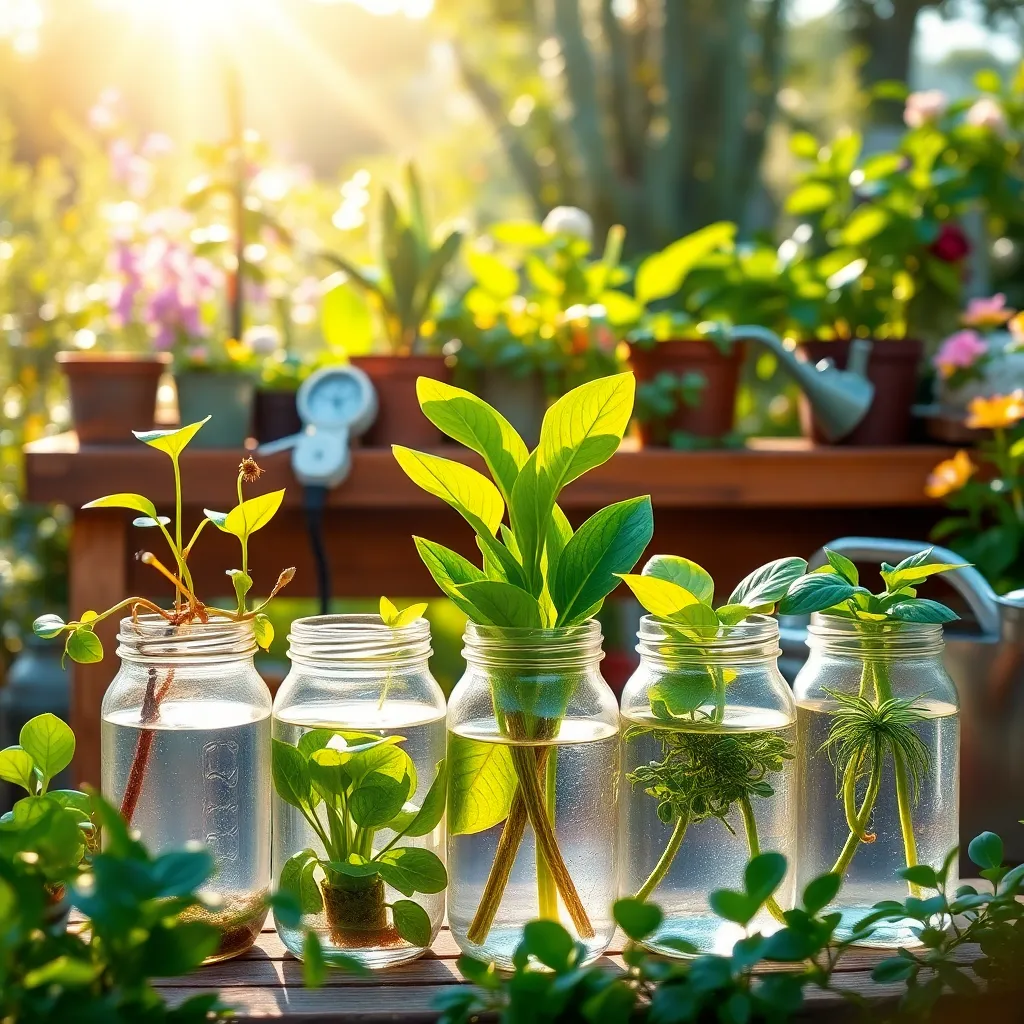
To keep your water-based plants thriving, regularly monitor and adjust water levels to ensure they remain optimal. Over time, water levels can drop due to evaporation or plant uptake, so it’s essential to check them at least once a week.
Begin by marking the initial water level on your container with a non-toxic marker. This simple trick allows you to quickly identify if the water level has changed, helping you maintain a consistent environment for your plants.
When refilling, use water that is at room temperature to avoid shocking the plants. Cold or hot water can stress the roots, potentially hindering growth and overall plant health.
For advanced care, consider the pH level of your water, as it can significantly affect nutrient absorption. Aim for a pH between 5.5 and 7.0, which is suitable for most plants grown in water; you can adjust this using pH up or down solutions available at garden centers.
Conclusion: Growing Success with These Plants
In exploring the nurturing art of growing plants in water, we’ve uncovered five key relationship concepts that can also help cultivate thriving human connections. First, just as plants need the right environment, relationships flourish in nurturing atmospheres. Second, consistent nourishment, whether water or affection, is essential for sustained growth. Third, patience is vital, as both plants and relationships develop at their own pace. Fourth, adaptability is crucial, allowing for adjustments in care as needs evolve. Lastly, observation helps identify when more support is required, ensuring both plants and partners feel valued.
To put these insights into action, take a moment today to assess your relationship environment. Consider one simple change you can make to enhance it—perhaps a kind word or a shared activity.
Remember, relationships require ongoing care, much like the plants you tend. Bookmark this article as your go-to guide for fostering both plant and personal growth. By integrating these principles, you’re planting the seeds for a future of healthy, fulfilling relationships. Keep nurturing, and watch your connections blossom into extraordinary bonds.

